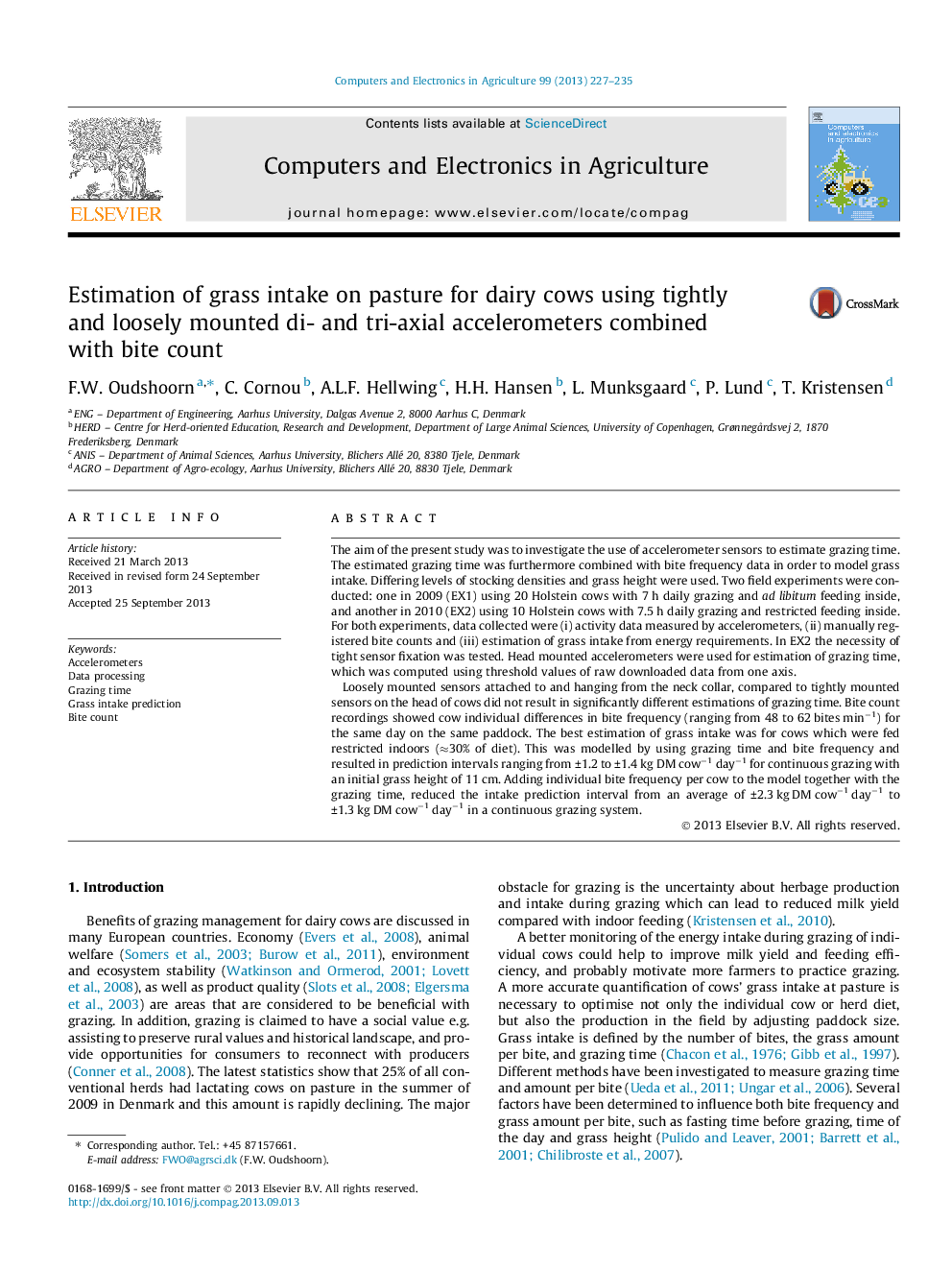| Article ID | Journal | Published Year | Pages | File Type |
|---|---|---|---|---|
| 6541016 | Computers and Electronics in Agriculture | 2013 | 9 Pages |
Abstract
Loosely mounted sensors attached to and hanging from the neck collar, compared to tightly mounted sensors on the head of cows did not result in significantly different estimations of grazing time. Bite count recordings showed cow individual differences in bite frequency (ranging from 48 to 62 bites minâ1) for the same day on the same paddock. The best estimation of grass intake was for cows which were fed restricted indoors (â30% of diet). This was modelled by using grazing time and bite frequency and resulted in prediction intervals ranging from ±1.2 to ±1.4 kg DM cowâ1 dayâ1 for continuous grazing with an initial grass height of 11 cm. Adding individual bite frequency per cow to the model together with the grazing time, reduced the intake prediction interval from an average of ±2.3 kg DM cowâ1 dayâ1 to ±1.3 kg DM cowâ1 dayâ1 in a continuous grazing system.
Related Topics
Physical Sciences and Engineering
Computer Science
Computer Science Applications
Authors
F.W. Oudshoorn, C. Cornou, A.L.F. Hellwing, H.H. Hansen, L. Munksgaard, P. Lund, T. Kristensen,
